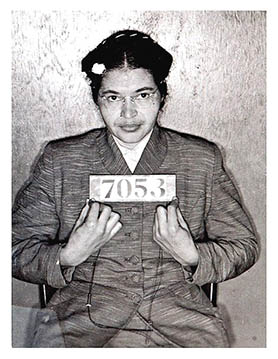The SF Bicycle Coalition has dedicated its latest journal to the issue of scofflaw. It makes a typical plea for everyone to be perfectly law-abiding in shared space.
We’ve been hearing from an increasing number of our own members, as well as political and community leaders, about this issue.
We know that most people are riding safely and courteously, but those who are not are making it less safe for all of us. Following the rules of the road and yielding to pedestrians is paramount to keeping our streets safe and inviting places for everyone.
A few tenants impact the safety of others and cause concern about all tenants. When enough tenants complain then law enforcement will step in to perform a typical show of force or a checkpoint or a sting. That seems like the usual cycle of things (pun not intended).
What is most interesting in the journal is the guidance to law enforcement by the SFBC:
The SF Bicycle Coalition is urging the SF Police Department (SFPD) to focus their efforts on the most dangerous behavior by road users at the known, most dangerous intersections. We know that drivers are responsible for the huge majority of injuries and fatalities to pedestrians on our streets, so this problem should receive the huge majority of enforcement attention.
We’ve heard troubling accounts of the SFPD setting up stings to catch people on bicycles rolling through stop signs on quiet streets where no one else is around. This isn’t focusing on dangerous behaviors at dangerous intersections, and these tickets are not prioritizing the actual goal of making our streets safer for everyone. We agree with your phone calls, e-mails, tweets, Facebook posts, etc, complaining that these tickets should not be prioritized at a time that limited enforcement resources should be aimed at actual dangerous behavior.
There should be an easier way to differentiate what is meant by “actual” dangerous behavior.
Data driven analysis is one way. The data on cars, in other words, shows a high rate of pedestrian accidents and fatalities treated as normal.
…none of these fatalities caused by people driving received even one-tenth of the attention that the high-profile Market/Castro incident involving a person biking fatally hitting a pedestrian last March drew. Why? Precisely because the latter is so rare. Equally tragic, absolutely heartbreaking, but undeniably rare.
Within just one week of that crash at Market and Castro Streets, there were two other pedestrian fatalities, both reportedly caused by people driving. Did you read anything about those?

[Kyra Phillips on CNN] asked Reverend Joseph Lowery, an African American civil rights advocate, how Parks’ memory made him feel about all the current-day commentators who are “always on the TV set complaining and shouting.” […] “It takes all approaches,” Lowery said. “I do not condone violence, but I do condone militancy.”
The bottom line is that stop-signs and stop-lights are not intelligent controls for segregation of traffic. They also were not designed with the best interests in mind for pedestrians or cyclists. In fact, red and green signals are a poorly thought-out adaptation from sailboats in the water (starboard and port). The colors operate smoothly when used on the water without stopping anyone; boats have no real brakes. Traffic signals should be about flow such that we can define “actual” dangerous behavior by harm (severity) but also obstruction (likelihood).
It would seem that cyclists are bringing to light (pun not intended) that relics of an endless-petroleum model of energy consumption can not last forever. Idling on empty streets with an engine that burns $5/gal gasoline in a new 10mpg engine seems like an incredibly bad idea today. Likewise, pushing pedals only to have to pull on the brakes and wait on an empty street makes little sense.
The modern round-a-bout was supposedly invented in America. Why not reconsider them with their modern improvements such as yield-at-entry?
The solution is undoubtedly in thinking about the purpose of signals and controlling movement. Avoiding collision is the goal, not re-enforcing wasteful and inefficient designs or in trying to develop an artificial and contrived definition of “good” behavior. I have personally watched the SFPD chase down and hand out tickets to cyclists that coast through stop signs yet they allow vehicles to run through the exact same signs without a reaction. At one point I approached the officers and asked about the inconsistency in enforcement. They simply said the department was responding to public concern about cyclists.


